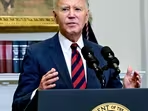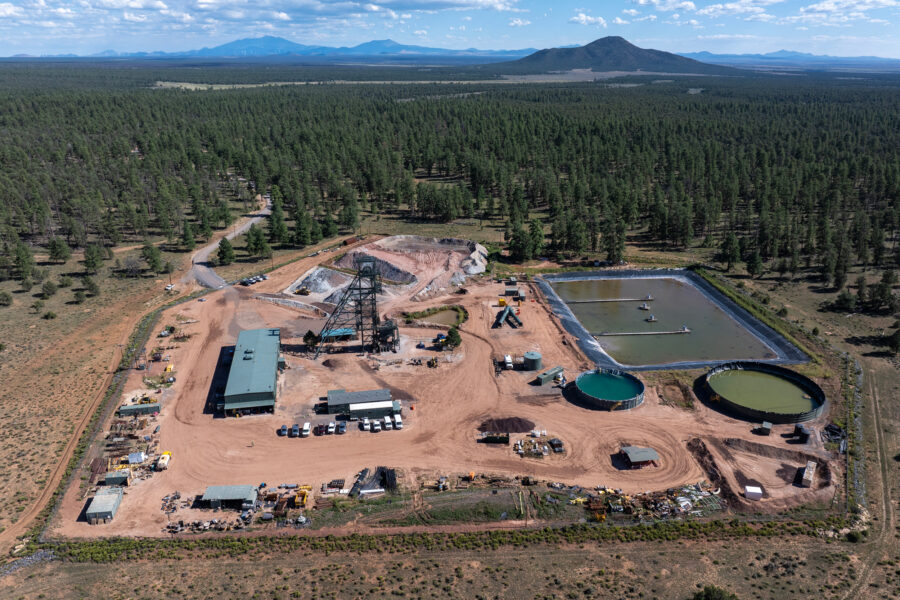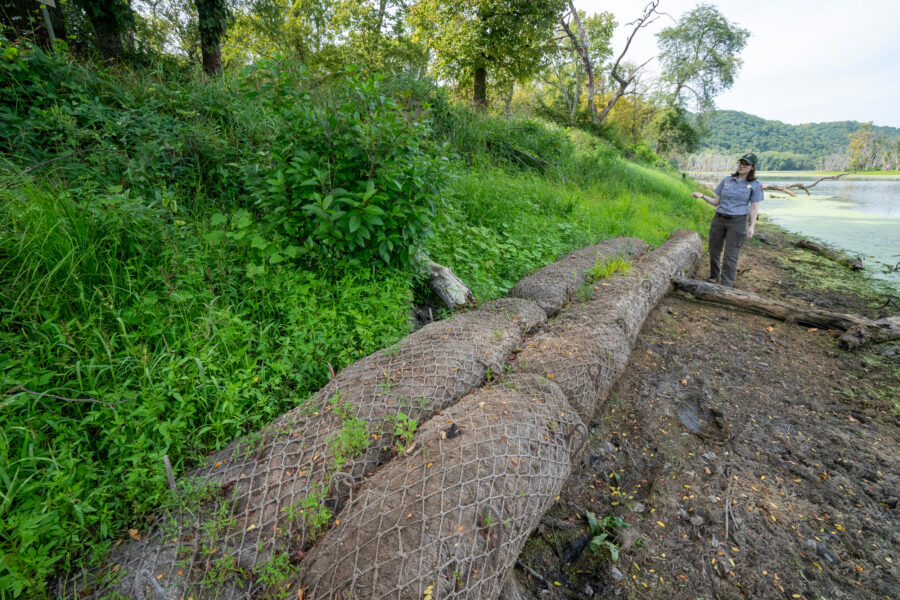In Inaugural Tribal Energy Summit, Carbon Capture, Critical Minerals and Sovereignty Take Center Stage
“Critical minerals are Indian minerals,” said Daniel Cardenas, a member of the Hammawi Band of the Pit River Tribe of California, at the Tribal Energy Summit held Thursday at the University of Wyoming in Laramie. “The energy transition must go through Indian country to be successful. That’s a huge opportunity and a huge responsibility as well.”
More than 60 percent of the cobalt and lithium, and nearly 90 percent of the nickel and copper for clean energy technologies like solar panels and batteries “lie either underneath Indian reservations or within 35 miles of one,” said Cardenas, the chief executive officer of both the American Indian Infrastructure Association and the National Tribal Energy Association.
Those facts highlighted the importance of this first summit, which focused on how tribal communities can profit from and participate in the boom of new energy development.
In a conference room at the university’s School of Energy Resources, speakers from the Eastern Shoshone and Northern Arapaho, who share the Wind River reservation in central Wyoming, the Southern Ute Indian Tribe, the Crow Nation, the Hammawi Band of the Pit River Tribe of California and the Navajo Nation shared cultural, legal and technocratic insights into how companies and tribes can work together on energy and mineral development across the West. Many spoke about the importance of building trust between tribes and government.
Explore the latest news about what’s at stake for the climate during this election season.
“We feel very strongly that state and tribal destinies are intertwined,” said Wyoming Governor Mark Gordon in opening remarks that he delivered remotely from his office in Cheyenne.
Many of the panels veered into explanations of tribal law or of federal and state laws governing energy development, which underscored the basic nature of many of the connections being forged at the conference, and the delicate diplomacy and negotiations that sometimes surround the development of resources on tribal lands. Several speakers highlighted the need for companies to be deferential when working with tribes, urging them to remember that sometimes it can be more practical to listen rather than speak.
Despite the importance of tribal lands to the supply of critical minerals for renewable energy, the conference opened and often focused on a technology promoted as a way to prolong the use of the fossil fuels that are currently a critical part of Wyoming’s economy. Much like Wyoming’s own energy summit last May, many panelists and audience members focused on carbon capture and sequestration, a technology Wyoming has welcomed for its potential to keep the state’s coal, oil and gas industries viable in the face of ever-cheaper renewable energy technologies that do not emit dangerous greenhouse gases into the atmosphere.
Indian reservations “can provide thermal generation with carbon capture sequestration to complement this renewable buildout,” said Andrew Browning, co-founder of Western States and Tribal Nations Energy Initiative, who moderated the summit’s opening panel on carbon capture and storage. The panel discussed Inflation Reduction Act (IRA) tax credits, subsurface mineral and pore space rights and the science behind carbon capture and sequestration.
Tribes, as panelists pointed out, do not pay federal taxes and are eligible for direct payment from the government for wells that store captured carbon underground. Audience members curious about the technology raised questions about the safety of carbon sequestration operations.
“This is not new technology, this has been done for decades,” Browning said. “This is a major piece of the IRA.” Panelists noted that companies can claim carbon capture tax credits for 12 years once a project comes online, but they did not directly answer an audience member’s question about whether the credit would survive a presidential administration change.
“I think a lot of the technology is unproven or has been disproven as energy intensive,” said Big Wind Carpenter, a two-spirit member of the Northern Arapaho who works on tribal engagement around climate change. Carpenter added that the Eastern Shoshone and Northern Arapaho have explored the idea of using carbon to reinvigorate production in old oil and gas wells on the reservation, which would add more climate warming emissions to the atmosphere. “I’m glad some in the audience were able to bring up some of these issues,” Carpenter said, adding that they were pleased with the panelists’ responses.
Carpenter said they also found explanations of tribal law and policy helpful. “A lot of people don’t understand the nitty gritty of tribal corporations,” and the rights those entities have within the reservation.
For many Native American speakers and some attendees, the carbon capture and rare earth mineral industries—and the energy transition more broadly—represent an opportunity for tribes to exercise energy sovereignty and draw benefits from a new wave of energy development after decades of mistreatment by the federal government and private industry in the extraction of resources on and around tribal lands.
“So many of the challenges that we face as indigenous people stem from hundreds of years of policy decisions that still affect our legal and cultural status today,” said Affie Ellis, Wyoming’s first Indigenous state senator, who is retiring from public service at the end of this year. “It takes time to unpack and unravel hundreds of years of law.”
On mining and critical minerals, presenters posited that the industry’s future lay on Indian reservations.
Historically, the posture from energy companies and the federal government toward tribes with valuable natural resources often has been predatory, some tribal attendees noted. Troy Eid, a lawyer who has mediated energy disputes between tribes and corporations, cited the example of Peabody Energy, a coal company that paid royalties to the Navajo Nation that were 10 times lower than the market price of the coal the company was mining on the reservation for most of the second half of the 20th century. And poor relations between energy companies and tribes can be expensive. The Dakota Access Pipeline was “over $1 billion over budget because of the intervention” of the Standing Rock Sioux Tribe, Eid said.
When the government or companies “find good things on the reservation, they take it,” Cardenas, of the American Indian Infrastructure Association and the National Tribal Energy Association, said. History may be repeating itself with the clean energy transition, he warned.
“We get told constantly that we need to get rid of fossil energy,” he said. “We need to move to green energy. We need to transition, it’s good for the environment, it’s good for climate change. But nobody ever asked Indian country whether it was good for Indian country.” Cardenas added that climate change was obviously occurring and that he hopes tribes can be at the forefront of the burgeoning industries that stand to profit from the energy transition.
To some degree, Native Americans have already benefited from the energy transition. Tribes across the West have been awarded tens of millions of dollars for clean energy development and home weatherization within their reservations as part of the Inflation Reduction Act, and the Navajo Nation is pursuing private sector funding for solar projects.
But Western states and tribes are not always aligned on energy, and fissures that have formed over centuries have fostered mistrust between the two sides. This year, for example, Harriet Hageman, Wyoming’s lone representative in the House, proposed a bill that would transfer a federallyowned hydropower plant and dam within Wind River to a private irrigation company. Tribes blindsided by the effort traveled to the District of Columbia to object to the bill, which has passed in the House and been introduced in the Senate.
“Meaningful input is consultation,” said Mike Ute, vice-chairman of the Eastern Shoshone Tribal Business Council. Holding an information meeting open to the public and not hearing any objections from Tribes there “is not consultation,” he continued. “If you are needing input from the tribes, go to the tribes and ask.”
Hageman’s office did not return a request for comment.
Many of the day’s speakers expressed gratitude throughout the day for the opportunity to share their expertise in front of tribal entities and companies. Audience members thought the discussion was productive, too.
“Meeting different energy tribes throughout the Mountain West and having those conversations is going to lead to future collaboration,” Carpenter said.
At the conclusion of the final panel, on Tribal sovereignty, Brian Williams, a commissioner for the Wind River Energy Commission, which assists the Eastern Shoshone and Northern Arapaho on tribal energy affairs, asked who in the audience wanted the summit to return in the coming years.
Almost every hand in the room went up.
About This Story
Perhaps you noticed: This story, like all the news we publish, is free to read. That’s because Inside Climate News is a 501c3 nonprofit organization. We do not charge a subscription fee, lock our news behind a paywall, or clutter our website with ads. We make our news on climate and the environment freely available to you and anyone who wants it.
That’s not all. We also share our news for free with scores of other media organizations around the country. Many of them can’t afford to do environmental journalism of their own. We’ve built bureaus from coast to coast to report local stories, collaborate with local newsrooms and co-publish articles so that this vital work is shared as widely as possible.
Two of us launched ICN in 2007. Six years later we earned a Pulitzer Prize for National Reporting, and now we run the oldest and largest dedicated climate newsroom in the nation. We tell the story in all its complexity. We hold polluters accountable. We expose environmental injustice. We debunk misinformation. We scrutinize solutions and inspire action.
Donations from readers like you fund every aspect of what we do. If you don’t already, will you support our ongoing work, our reporting on the biggest crisis facing our planet, and help us reach even more readers in more places?
Please take a moment to make a tax-deductible donation. Every one of them makes a difference.
Thank you,
David Sassoon
Founder and Publisher
Vernon Loeb
Executive Editor
Share this article
- Republish
Disclaimer: The copyright of this article belongs to the original author. Reposting this article is solely for the purpose of information dissemination and does not constitute any investment advice. If there is any infringement, please contact us immediately. We will make corrections or deletions as necessary. Thank you.
Title:In Inaugural Tribal Energy Summit, Carbon Capture, Critical Minerals and Sovereignty Take Center Stage
Url:https://www.investsfocus.com










